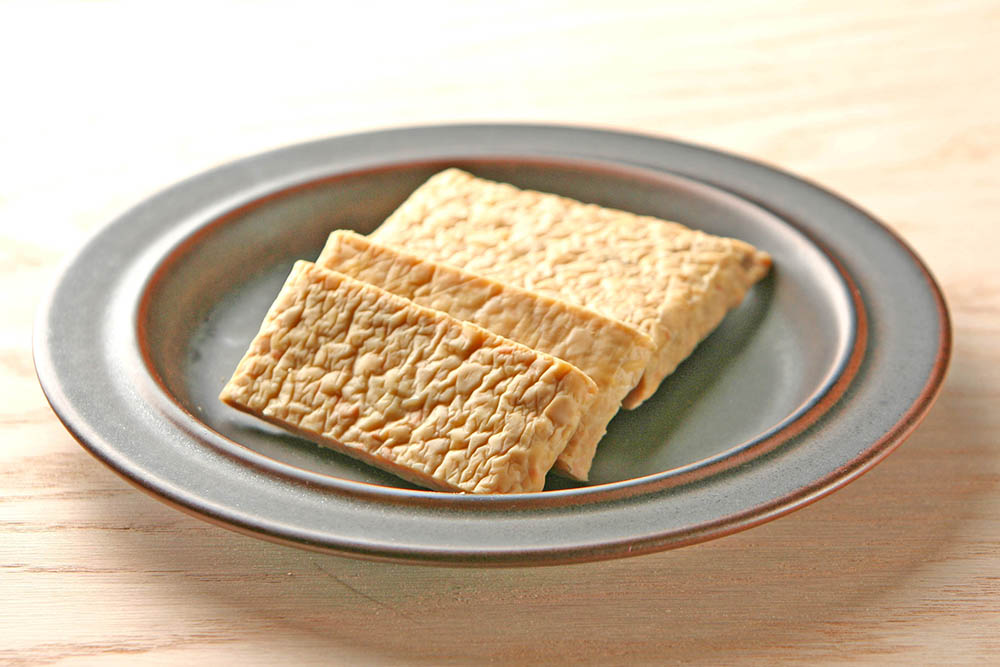TEMPEH AND SCHOOL LUNCH REIMBURSEMENT AND OTHER CHILD NUTRITION PROGRAMS IN THE USA

This memo is from the United States Department of Agriculture Food and Nutrition Service
This memorandum provides guidance on crediting tempeh in the child nutrition programs (CNPs), including the National School Lunch Program, School Breakfast Program, Child and Adult Care Food Program, and Summer Food Service Program. Tempeh is a highly nutritious fermented soybean cake traditionally made from whole soybeans. Although mature beans have traditionally been credited as a meat alternate in the CNPs, the Food and Nutrition Service (FNS) has not previously issued guidance on crediting tempeh. Based on stakeholder feedback, FNS is updating CNP food crediting guidance to explain how to credit tempeh as a meat alternate.
In December 2017, FNS solicited comments on the CNP crediting system through a Request for Information (RFI). FNS sought public input about specific foods, including tempeh, due to high interest. FNS asked whether tempeh should credit, and if so, how tempeh should credit. FNS also invited commenters to provide input on any ingredients, processing methods, or nutrient standards that FNS should consider, and to share their ideas for incorporating tempeh into a reimbursable meal or snack. The comments are available for review at https://www.regulations.gov/docket?D=FNS-2017-0044.
Tempeh is used as a meat alternate in a variety of recipes, including stir-fries, sandwiches, and salads. The 2015-2020 Dietary Guidelines for Americans (Dietary Guidelines) identify soy products as protein foods, and a good source of copper, manganese, and iron. A key recommendation of the Dietary Guidelines is to consume a variety of protein foods, including seafood, lean meats and poultry, eggs, legumes (beans and peas), and nuts, seeds, and soy products. As commenters noted, providing a straightforward crediting method for tempeh provides improved access to an additional vegetarian option, allowing program operators to diversify menus to meet the dietary needs of participants with vegetarian preferences or dietary restrictions for cultural or religious reasons.
Program operators now may credit 1 ounce of tempeh as 1 ounce equivalent of meat alternate. This method of crediting applies to tempeh with ingredients limited to soybeans (or other legumes), water, tempeh culture, and for some varieties, vinegar, seasonings, and herbs.
FNS will update the Food Buying Guide for Child Nutrition Programs to include tempeh in the meat/meat alternates section. To view the Food Buying Guide, please visit https://www.fns.usda.gov/tn/food-buying-guide-for-child-nutrition-programs.
Varieties of tempeh that include other creditable foods as ingredients, such as brown rice, sunflower seeds, sesame seeds, flax seed, and/or vegetables, may also credit as meat alternates, grains, and/or vegetables. Since foods must be present in the minimum creditable quantities (⅛ cup or ¼ ounce equivalents) to credit in the CNPs, documentation must show how much tempeh and other creditable foods these products contain. Thus, to credit these varieties, program operators must obtain a Child Nutrition (CN) Label or a Product Formulation Statement (PFS) from the manufacturer. These varieties may credit based on the ingredient quantities identified in the CN Label or PFS. For more information, please see:
- CN Labeling: https://www.fns.usda.gov/cnlabeling/child-nutrition-cn-labeling-program.
- Manufacturer’s Product Formulation Statement: https://www.fns.usda.gov/cnlabeling/food-manufacturersindustry
FNS remains committed to simplifying menu planning for CNP operators, promoting the efficient use of program funds, and ensuring operators and participants have a wide variety of nutritious and appealing food choices. We recognize that crediting decisions have an impact on schools, child care centers, adult day care centers, day care homes, the food industry, and most importantly, participating children and adults. The agency is committed to staying up-to-date with the evolving food and nutrition environment through continued engagement with a variety of stakeholders. Through these efforts, FNS will work to maximize the availability of wholesome food options while minimizing administrative burden in the CNPs.
State agencies are reminded to distribute this memorandum to program operators. Program operators should direct any questions concerning this guidance to their state agency. State agencies with questions should contact the appropriate FNS regional office.
For more information, see:
The Food Buying Guide for Child Nutrition Programs https://www.fns.usda.gov/tn/food-buying-guide-for-child-nutrition-programs
Meats/Meat Alternates https://foodbuyingguide.fns.usda.gov/Content/TablesFBG/USDA_FBG_Section1_MeatsAndMeatAlternates.pdf
